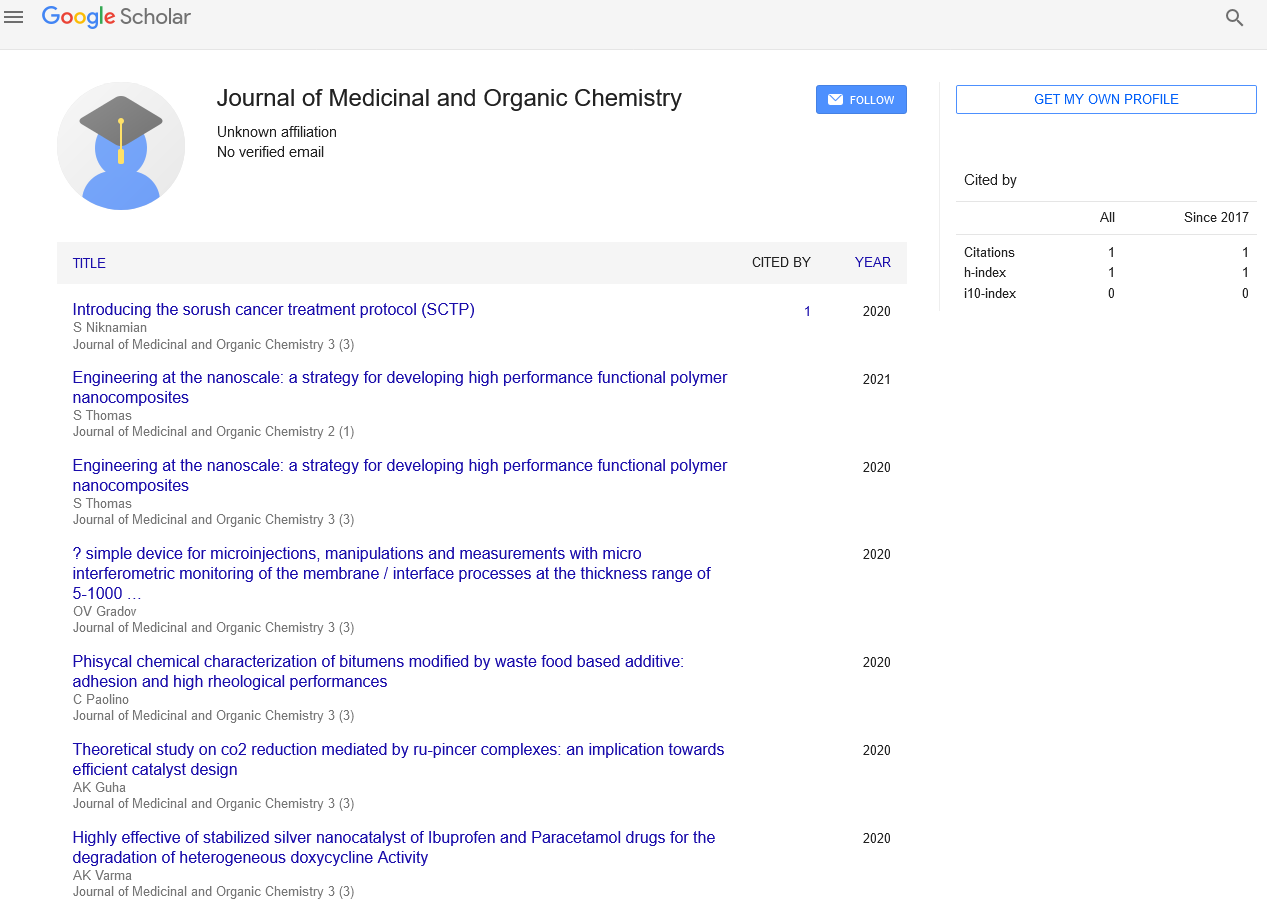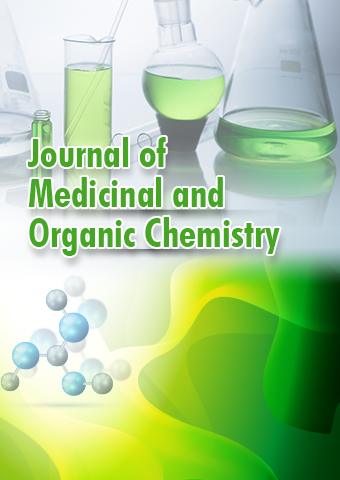Perspective - Journal of Medicinal and Organic Chemistry (2024) Volume 7, Issue 6
The Interplay of Chemical Biology: Unveiling NatureâÂÂs Molecular Symphony
- Corresponding Author:
- Bouchra Nasri
Department of Chemistry,
University of Owerri,
Ihiagwa,
Nigeria
E-mail: bouchra.nasri@u.ca
Received: 03-Jul-2024, Manuscript No. JMOC-24-140626; Editor assigned: 08-Jul-2024, PreQC No. JMOC-24-140626 (PQ); Reviewed: 22-Jul-2024, QC No. JMOC-24-140626; Revised: 02- Dec-2024, Manuscript No. JMOC-24-140626 (R); Published: 30-Dec-2024, DOI: 10.37532/jmoc.2024.7(6).271-272
Introduction
In the vast landscape of scientific inquiry, the disciplines of chemistry and biology stand as pillars of understanding the natural world. While traditionally viewed as separate realms, the burgeoning field of chemical biology seeks to bridge these disciplines, unveiling the intricate molecular mechanisms that underpin life itself. This interdisciplinary approach not only enriches our understanding of biological processes but also paves the way for innovative discoveries with profound implications for medicine, agriculture and environmental sustainability.
Description
The essence of chemical biology
Chemical biology can be likened to a finely woven tapestry where chemistry provides the tools and techniques to dissect and manipulate biological systems at the molecular level. At its core lies the belief that understanding the chemistry of life is paramount to understanding its complexities. This approach goes beyond the traditional reductionist view of biology by integrating chemical principles to elucidate biological phenomena. By harnessing chemical strategies, researchers can probe biological processes with unprecedented precision, unraveling the mysteries encoded within cells, tissues and organisms.
Tools of the trade: Chemical probes and techniques
Central to chemical biology are chemical probes-molecular tools designed to interact selectively with specific biological targets. These probes serve as molecular spies, allowing researchers to track and manipulate biological molecules in their native environments. Techniques such as fluorescence microscopy, mass spectrometry and X-ray crystallography enable researchers to visualize and analyze molecular interactions with exquisite detail. Moreover, advancements in synthetic chemistry empower scientists to design bespoke molecules tailored to probe and modulate biological function-a testament to the symbiotic relationship between chemistry and biology.
Unraveling biological complexity
From unraveling the intricacies of cellular signaling pathways to elucidating the molecular basis of disease, chemical biology has catalyzed groundbreaking discoveries. For instance, the development of kinase inhibitors-a class of drugs that block specific enzymes involved in cell signaling-has revolutionized cancer treatment. By targeting aberrant kinase activity, these inhibitors halt tumor growth while minimizing harm to healthy tissues, exemplifying the therapeutic potential of chemical biology in combating disease.
Furthermore, chemical biology plays a pivotal role in understanding and combating antimicrobial resistance-a global health crisis exacerbated by the misuse of antibiotics. Through chemical synthesis and biological screening, researchers are identifying novel antimicrobial agents capable of circumventing resistance mechanisms, offering hope in the fight against drug-resistant pathogens.
Applications beyond medicine
Beyond medicine, chemical biology holds promise in agriculture and environmental science. By deciphering plant-microbe interactions and developing environmentally friendly pesticides, researchers aim to enhance crop yields while minimizing ecological impact. Similarly, understanding the molecular mechanisms of environmental pollutants enables the design of remediation strategies to mitigate their adverse effects on ecosystems-a testament to the far-reaching implications of chemical biology in addressing global challenges.
Synthetic biology: Engineering life at the molecular level
Beyond understanding natural systems, chemical biology contributes to synthetic biology-an emerging field focused on designing and constructing novel biological systems. By combining principles from chemistry, genetics and engineering, researchers aim to create synthetic cells, enzymes and genetic circuits with tailored functions.
Synthetic biology holds promise across diverse applications, from bioremediation of environmental pollutants to the production of biofuels and pharmaceuticals. By harnessing biological machinery and redesigning it for specific tasks, scientists envision a future where custom-designed microbes could produce complex molecules like antibiotics or bioplastics sustainably and efficiently.
Future directions and challenges
Looking ahead, the future of chemical biology is brimming with possibilities and challenges. The integration of artificial intelligence and machine learning promises to accelerate the discovery of novel chemical probes and therapeutic agents, revolutionizing drug development and personalized medicine. However, navigating ethical considerations surrounding gene editing and synthetic biology demands thoughtful deliberation to ensure responsible innovation and equitable access to emerging technologies.
Moreover, fostering interdisciplinary collaboration remains paramount in advancing chemical biology, transcending disciplinary boundaries to forge new frontiers of scientific inquiry. By cultivating a diverse and inclusive scientific community, we can harness collective expertise to tackle complex biological questions and propel the field towards new horizons of discovery.
Conclusion
In conclusion, chemical biology stands at the nexus of chemistry and biology, offering profound insights into the molecular machinery of life. Through the synergistic application of chemical principles and biological knowledge, researchers continue to unravel biological mysteries and pioneer transformative solutions to global challenges. As we embark on this scientific journey, the fusion of chemistry and biology promises not only to illuminate the intricacies of life but also to inspire innovation and improve the human condition in ways yet to be imagined.

